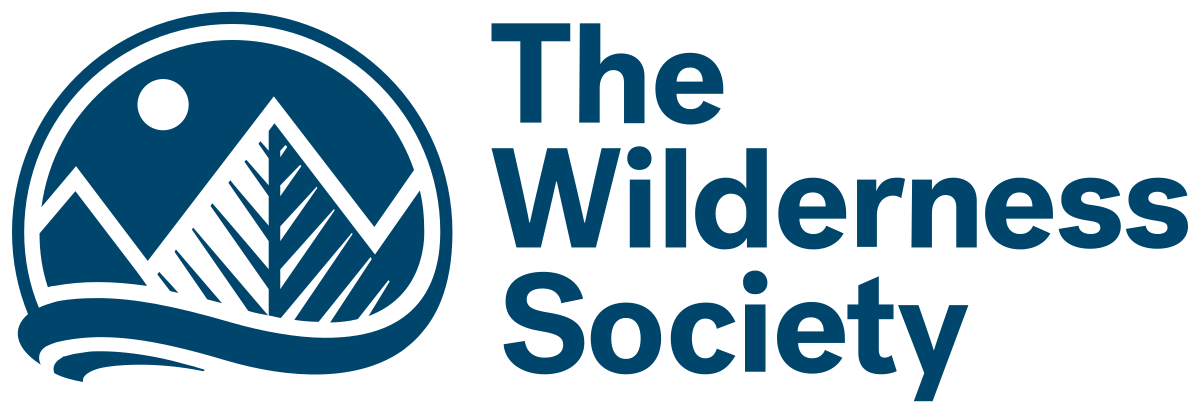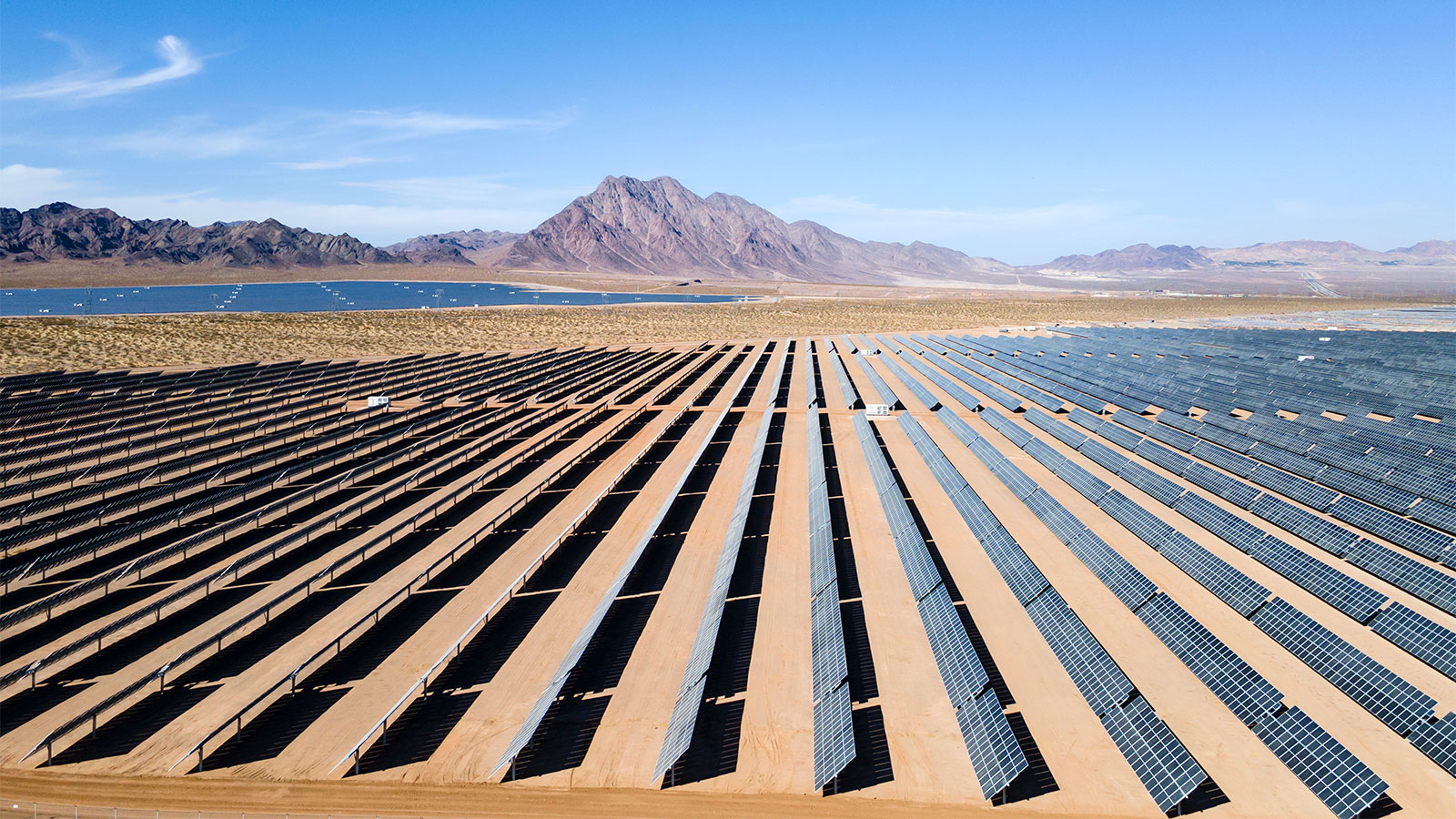When Mike Quigley heard about a new energy transmission line the federal government was considering from Arizona to California in 2018, his feelings were mixed. Quigley serves as the Arizona state director of the conservation organization The Wilderness Society, and supports looking to public lands for the multiple roles they can play in addressing climate change. So in 2018, he supported a shift toward renewables to fight climate change. But the proposed transmission route bisected a wildlife refuge that offered important habitat to several desert species, and also threatened a beloved canyon.
This was a problem. To him, the role of public lands in the climate fight goes beyond their renewable energy potential, or reducing the oil, gas and coal emissions that stem from them. Quigley says healthy public lands naturally clean air and water, support natural carbon storage, and help buffer communities against both the physical and emotional impacts of living with climate change.
And he wasn’t the only one concerned. Officials said the 500kV powerline was needed to connect substations in Tonopah, Arizona, and Blythe, California, in order to provide more renewable energy in the Southwest. But the 125-mile Ten West Link electrical transmission line initially faced significant opposition because of its preliminary proposed route, which cut through Johnson Canyon and the Kofa National Wildlife Refuge near Yuma, Arizona.
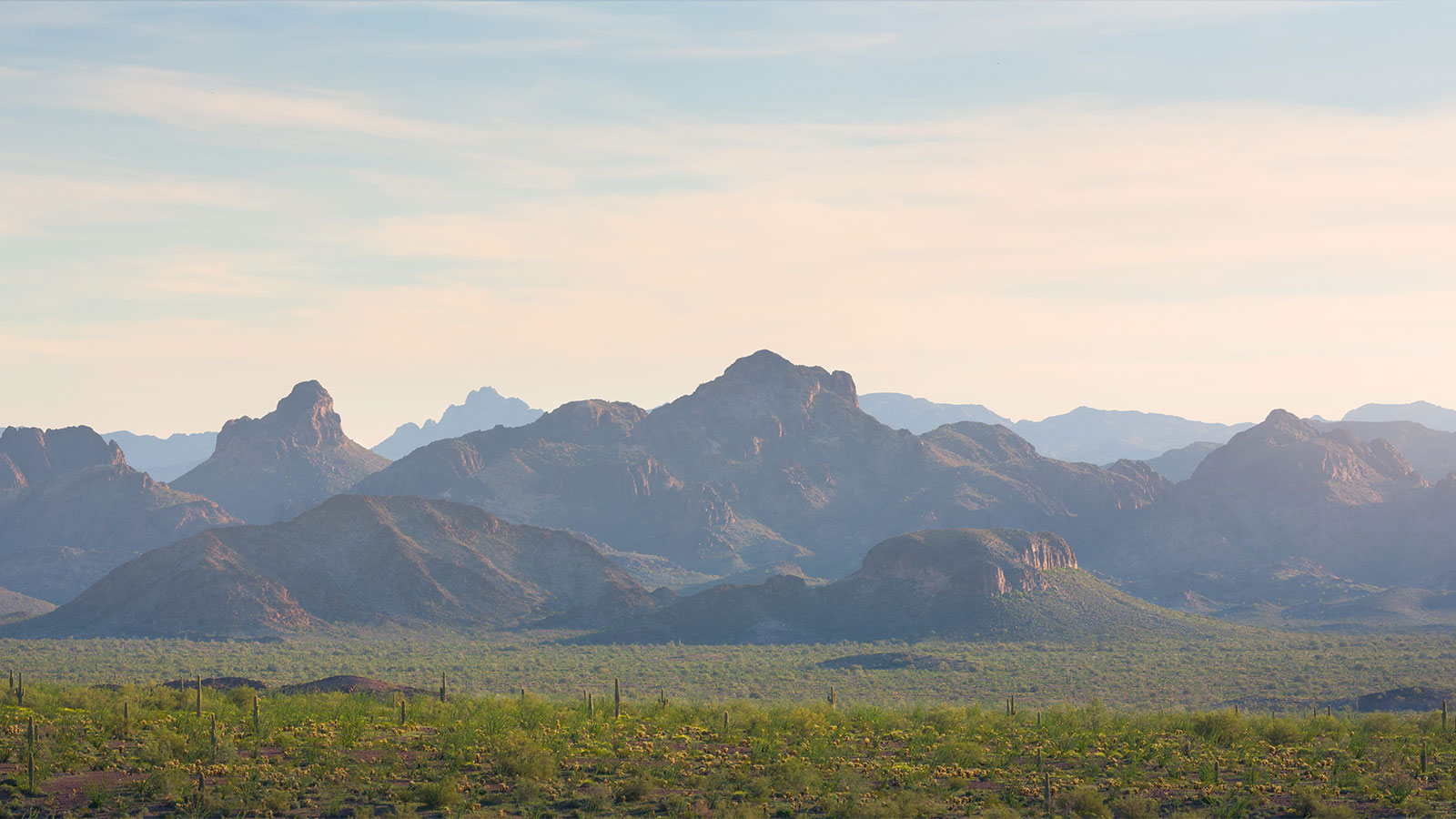
The 665,400-acre refuge offered crucial habitat for endangered species between the Kofa Mountains and Castle Dome Mountains. Among them were the Sonoran pronghorn antelope. In the early 2000s, “you could count on both hands the number of Sonoran pronghorn left in the United States,” Quigley says.
Since then a successful breeding program had built the population back up. It worked particularly well in the Kofa refuge, where mountain lions were a less prevalent predator than in other areas. Other wildlife, like the desert horned lizard, red-spotted toad, desert iguana, chuckwalla, the elusive Gila monster, and the western diamondback rattlesnake, were among the 702 different species of animals and plants officially found within Kofa. Migratory birds such as white-winged doves, cactus wrens, northern flickers, canyon towhees, Gambel’s quails, and golden eagles would also pass through the refuge in significant numbers in spring and fall.
Hikers and birdwatchers came out in force to see the migrations. The local community worried that the project would harm tourism to the desert region. JC Sanders, a retiree and off-highway vehicle enthusiast, was among those concerned. Sanders particularly loved taking his all-terrain vehicle on Kofa’s open travel routes and through the nearby Johnson Canyon. “It gives populations like me, the elderly, an opportunity to see isolated areas and the animals,” he says. “Bighorn sheep have very little fear of vehicles out there in the wilderness.”
A series of public meetings revealed deep community opposition to the project. Sanders is vice-chair of the Arizona Peace Trail, a coalition of 14 Southwestern off-highway vehicle groups advocating for a 675-mile trail from Bullhead City to Yuma. He and his counterparts met multiple times with the project engineers, even taking them to the prized Johnson Canyon site.
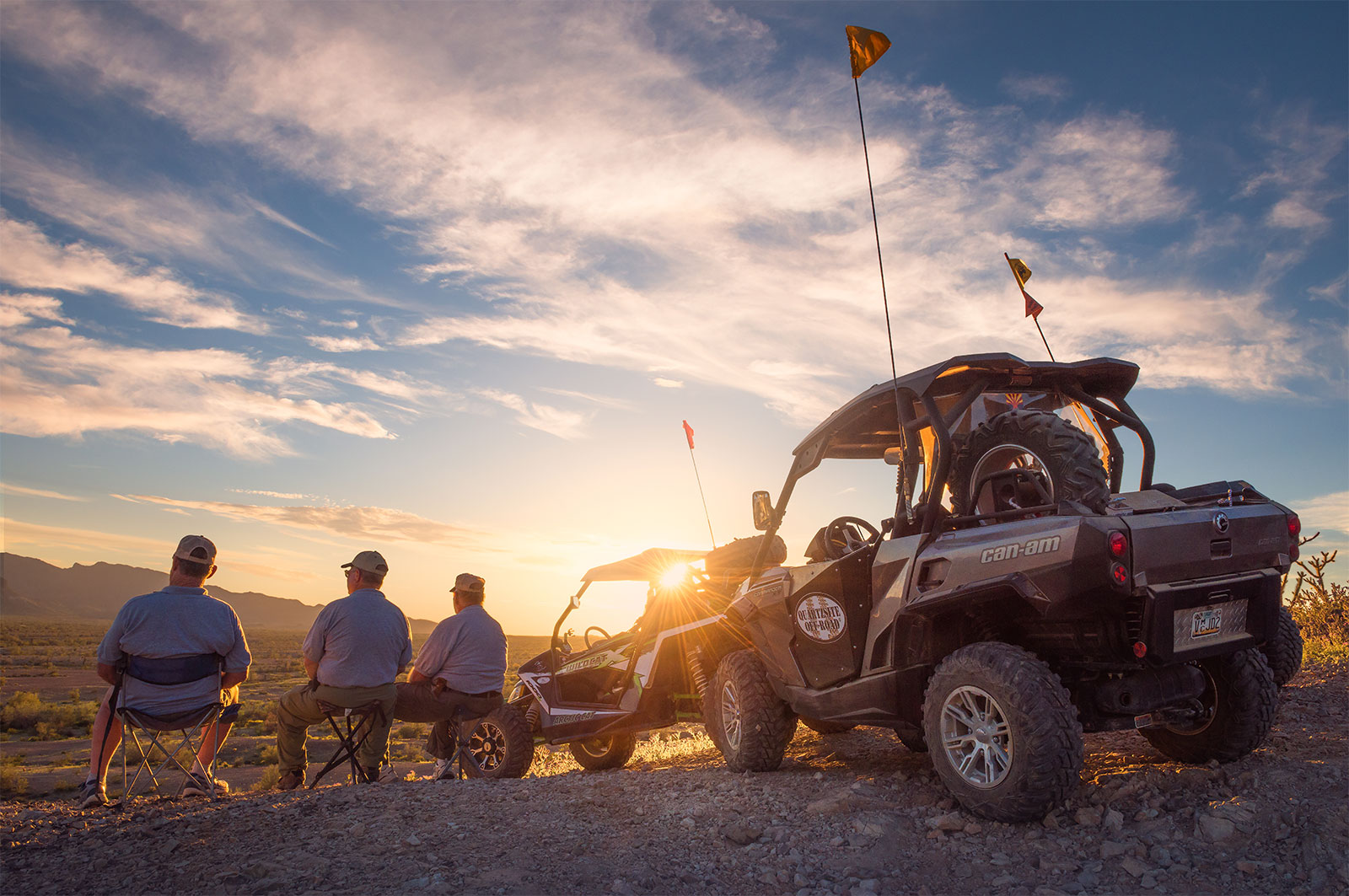
To overcome the impasse, The Wilderness Society, federal agencies, and locals worked together to identify an alternative route for the transmission line along Interstate 10. A conservation nonprofit called the Sonoran Institute, which had been trying to identify promising energy corridors, had previously studied this route. It runs parallel with I-10 along the West-wide Energy Corridor to avoid Kofa, then joins an existing power line route once it gets west of the wildlife refuge.
This new path avoids environmentally sensitive areas like the Kofa refuge, recreation areas, populated regions, significant cultural resources, and the Colorado River Indian Tribes reservation. As an added bonus, it utilizes existing infrastructure, minimizing the project’s environmental impact. “It fulfills its primary purpose of taking non-carbon-emitting energy to market, and it does it in the least environmentally damaging way possible,” Quigley says. “This is an example of how that can work in practice.”
The project broke ground this spring, with Vice President Kamala Harris and other federal officials in attendance. Power is expected down the line by 2024.
While the new route may be slightly less direct, it will likely save money by avoiding litigation when a project is publicly opposed, says Justin Meuse, The Wilderness Society’s director of government relations for climate and energy. He says the Ten West Link project shows it is possible to responsibly develop renewable energy projects and transmission on public lands by ensuring meaningful public participation from the outset.
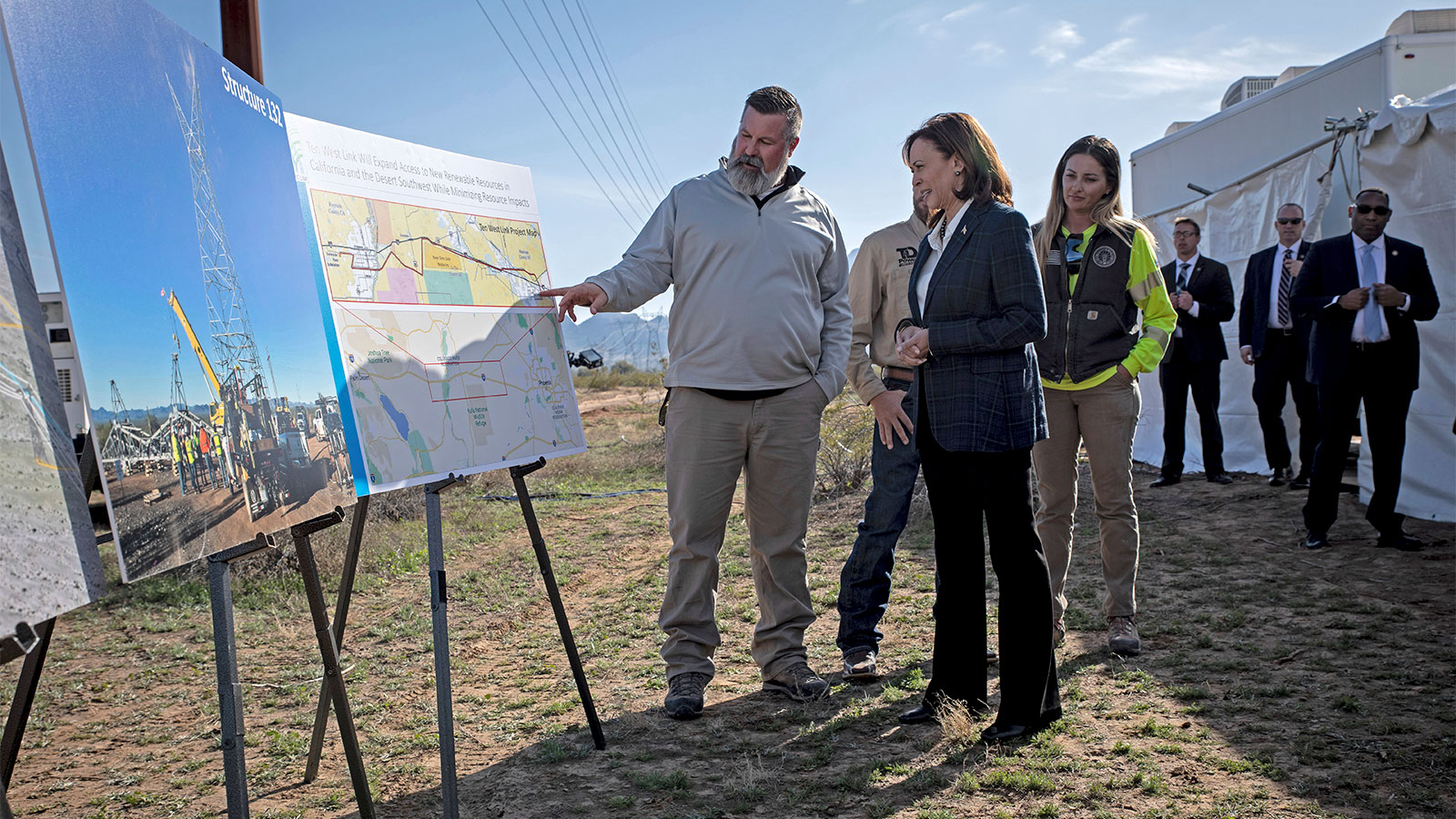
Sanders, a retired civil engineer himself, says maintaining good relationships between officials, groups, and members of the public is key to working out mutually agreeable solutions. “Rather than standing up and opposing a proposal, get to know the people and let them know what your specific concerns are,” he says. “Work on alternatives — help them out. Help them achieve the ultimate goal. Public involvement is critical on any project like this.”
The ultimate goal, environmental experts explain, is to bring more decarbonized energy online— without replicating some of the environmental injustices practiced by the fossil fuel industries. “We want to reach our clean energy future, but we don’t want to repeat the mistakes of the past,” Meuse says, particularly when it comes to community involvement.
That means providing sufficient time for public comment periods for proposed projects, Meuse says. In his experience, a standard 45-day public comment period often passes without communities or neighborhoods even knowing it has opened.
Longer response times are “worth it in the long run,” he says. “You see a lot of the discourse about community opposition to wind and solar site location that could be addressed with more time to comment—and early and effective outreach—rather than just jamming the project through.”
Advocates believe that the positive solutions found for Ten West Link can be replicated elsewhere. The Biden administration, for instance, is currently updating and expanding a plan for solar in the western United States that was developed in 2012. When complete, the plan could incorporate an additional five states, and focus on identifying low-conflict areas for development based on wildlife habitat, distance from cultural resources, and proximity to existing infrastructure.
The 200-megawatt Dry Lake Solar Energy Project in Nevada is another example of this success. The area to be developed—some 1,635 acres of public land near Las Vegas—was pre-screened by the Department of Interior’s Bureau of Land Management as a low-conflict area. Meuse says that, as a result, the project’s permitting time has been about half its typical length.
Ensuring that federal agencies have enough resources will facilitate these kinds of community-oriented approaches. While the Inflation Reduction Act included $1 billion for conducting national environmental policy analyses, more is needed on a regular basis for historically underfunded agencies, Meuse says.
“It’s the kind of model that takes investment, time, and engagement,” he says. “That’s what we prioritize — ensuring that nobody’s getting steamrolled in the name of our clean energy future.”
The Wilderness Society has been working since 1935 on uniting people to protect America’s wild places. With more than one million members and supporters, The Wilderness Society has led the effort to permanently protect nearly 112 million acres of wilderness in 44 states and ensure sound management of public lands. We believe that public lands can and should be a critical part of the solution to the climate crisis and a healthy future for all. We work to rapidly and fairly phase out fossil fuel development, responsibly ramp up renewable energy development, and protect and restore natural carbon sinks – like old-growth forests – on public lands and waters.

